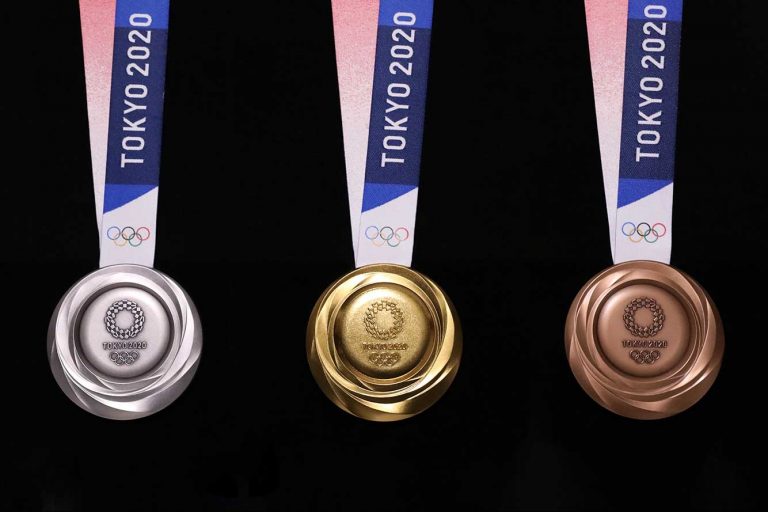
Tokyo 2020 is a year away – athletes are training hard for their lifelong dream of a medal at the games. This week, Japan unveiled the design of the logos – and they are stunning. The medal, while adhering to the International Olympic Committee regulations* has also incorporated two political messages – ‘unity in diversity’ and ‘sustainability’.
Sustainability:
We will get straight to the point – Every single medal that will be awarded to the athletes during the Tokyo 2020 Games are made from recycled metals. The Tokyo Organising Committee of the Olympic and Paralympic Games (Tokyo 2020) conducted the “Tokyo 2020 Medal Project” to collect small electronic devices such as used mobile phones from all over Japan to produce the Olympic and Paralympic medals. Between April 2017 and March 2019, 100 per cent of the metals required to manufacture the approximately 5,000 gold, silver and bronze medals were extracted from small electronic devices that were contributed from people all over Japan.
The “Tokyo 2020 Medal Project” is an official “Tokyo 2020 Nationwide Participation Programme”. The project hopes their efforts contribute to an environmentally friendly and sustainable society.
Unity in Diversity:
The ribbon will employ the traditional Japanese design motifs found in ichimatsu moyo (harmonised chequered patterns) and kasane no irome (traditional kimono layering techniques) in a modern presentation. The ribbon is designed to be a reflection of Japan itself and of the way the country demonstrates “Unity in Diversity”. The design also promotes the Tokyo 2020 brand vision of “Innovation from Harmony”.
Silicone convex lines are applied on the surface of the ribbon so that anyone can recognise the type of medal (gold, silver or bronze) by simply touching it. Chemically recycled polyester fibres that produce less CO2 during their manufacturing process are used; these allow the ribbons to incorporate the Tokyo 2020 core graphic colours and to be extremely durable at the same time.
The medals were created by Japanese designer Junichi Kawanishi following an open competition, and the cases were designed by Shinya Yoshida.
Note*: The International Olympic Committee regulations stipulate that obverse medal design should include the following elements:
- Nike, the Greek goddess of victory, in front of the Panathinaikos Stadium
- The official name of the respective Games, in this case Games of the XXXII Olympiad Tokyo 2020
- the Olympic five rings symbol





